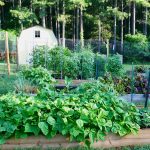When choosing flowers for a butterfly garden, it’s important to choose flowers for both food (nectar) and hosting the young butterfly caterpillars. Adding both types of plants to the garden ensures butterflies year-round and a variety of species. Their colorful antics will delight young and old alike, so be sure to choose a sunny location near your home for your butterfly garden plants so you can easily watch the beautiful butterflies as they alight upon your flower garden.
Butterfly Garden Plants
Plant your butterfly garden in a bright, sunny area. An ideal location receives full sun and has some sort of windbreak, such as a wall, garage or plants that shield the area from excessive wind, but any bright location will do. Most butterfly garden plants require full sunlight, which is defined as six or more hours per day of direct, full sun.
Butterfly garden plants tend to be very hard and are great for naturalizing. The following are great for butterfly gardens and terrific addition to any flower garden.
- Butterfly Bush, also called Buddleia: Butterfly bush grows rapidly and will even reseed itself, sending up “volunteers” or baby plants throughout the garden. It produces spikes of flowers starting in early summer and continuing until the first frost. Buddleia “Black Night” is one of the most popular. It has dark purple flowers and a good fragrance. Other colors include shades of purple ranging from the deepest purple of Black Night through a pale lavender, pink, white, and bicolored pink shades. There are even grafted plants featuring multiple colors on one plant. You can buy plants inexpensively at most garden centers or through mail-order catalogs.
- Coreopsis: Coreopsis grows readily in sunny, hot conditions and spreads rapidly by seed. Most species have yellow, daisy-like flowers.
- Echinacea: Also called Purple Coneflower, Echinacea is beloved by butterflies. It comes in many shades of purple, pink and lavender, as well as white and yellow.
- Butterfly Weed or Aesclepias: Another plant butterflies love!
- Milkweed: Milkweed is native to the Americas, and grows in bright, sunny fields.
- Lavender: Lavender attracts butterflies as well as bees to the garden.
- Zinnias: Annual zinnias added to the garden also attract many butterflies.
- Marigolds: Butterflies will also flock to annual marigolds added to the garden.
Host Plants for Butterflies
Any butterfly garden should include host plants. Butterflies lay their eggs on host plants, and as the young caterpillars hatch, they feed upon the plants. Expect the caterpillars to leave the host plants with ragged leaves; they have voracious appetites when they emerge. As the caterpillars mature, they will spin their cocoon and emerge later as beautiful butterflies.
Each butterfly species requires different host plants, but some easy to grow host plants include:
- Parsley: Yes, this is the same parsley that fancy restaurants leave as a garnish on your plant. It’s loved by many butterflies, so add some parsley to your butterfly garden.
- Milkweed: Monarch butterflies require milkweed plants for hosting their larva.
- Passionflower: Certain butterflies love passionflower vines.
- Native tree species such as elm, willow, and cherry
The Importance of Organic Gardening Practices
If you wish to attract wild birds or butterflies to your garden, be sure to use organic gardening practices. Organic gardening practices do not add harsh chemicals to the garden. Both wild birds and butterflies are very vulnerable to chemical pesticides and fertilizers and may absorb them through ingesting the nectar, seeds, or leaves of plants. Organic gardening practices such as adding good compost (or composted banana peels, coffee grinds and other kitchen scraps) to build up the soil, using natural pesticides such as neem oil, and other practices to reduce pest infestations and support soil and plant health.
If you take care of your garden and include plants butterflies love, you’re sure to see them during the warm months. Pull up a chair and enjoy the show. These are nature’s jewels and an important part of the garden ecosystem.





I love your butterfly photo. I’ll be sure to read your article. Yes, it is time to start thinking about planting. I have a green house and from my window it is a white out today. It will take me weeks to get there.